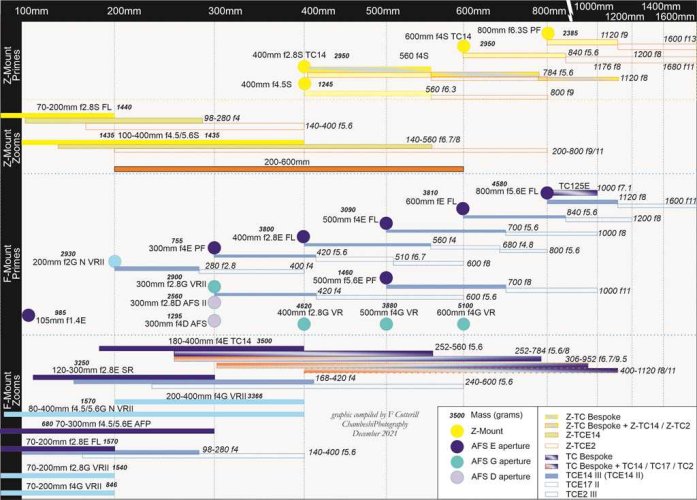Telephoto choices are always complex, and a huge commitment in big costs. It's challenging, impossible really, for 1 questionaire to try and cover all the options presented in the modern Nikon Z system, especially if we include F mount options (that include several popular 3rd party telephotos). So it's all the more challenging to settle on just "the One" telephoto for wildlife

It is essential to scope out one's subjects first and foremost: close ups, animalscapes, BIF, portraits...or combinations of categories. If you have a portfolio taken with a current system, collating the metadata of EXIF fields is useful (to compare use of focal lengths etc).
These answers are the precursors to refine and answer a set of structured questions, out which fall the answers to queries such as "400mm or 600mm?" "f2.8, f4, f5.6?", "Zoom or Prime?", "TC - internal or External?". Feasibility is obviously subject to budget, obviously. I believe it helps to write out a list of questions to answer, which are best pondered over...
1.
Primes vs Zooms over ~100-600 - how often do you need to zoom out from 400mm (back to 200mm or wider), or extend beyond 400mm?
Too often photographing African mammals, I need 200mm or wider: so it's useful to pair a 70-200, or 100-400 with the longer prime. This is where the 180-400 TC14 remains one of the best single lenses in this role. This is my primary lens on a D6, paired with Z9 and 800 PF. This versatility with a super Zoom is probably an important reason for the popularity of a Bigma for Africa (the Sigma superzooms)
2.
Using 1 or 2 Teleconverters to extend to 800mm: how often do need to tighten the fields of view (from 400 to 800mm) ?
Choices include 1.2kg 400 f4.5S; 400 TC 2.9kg; 600 TC 3.5kg subject to weight, advantage of an integral TC, and obviously weight
3.
With a genuine 800mm, how often do you need 1000mm, 1120mm or even 1600mm?
I often needed the TC2 III on my 400 f2.8E FL for the extra reach. Since using a 800 PF, the ZTC14 has yet again proved to be an essential enabler. And so has the ZTC2 on the rarer occasion.
4.
Last but not least, consider the weights of Telephoto(s) and the complete Kit(s) - as to feasibility of Handholding, Handling and Transportation:
This is where it's useful to filter options / choices through Brad Hill's categories of Commando (i.e. self-propelled or peripatetic) versus Destination Kits [see his
recent overview of his camera and lens and more)
4A.
Each telephoto for handholding? Is it feasible and for how long without support?
The answers depend on personal strength and also one's heath etc, besides the actual weights of the options eg 3.5kg 600 TC or 2.4kg 800 PF
4B.
Net weight of your system (s) is it feasible for Hiking or fits the Cabin regulations when Flying?
Critical factors include additional weight of the Pro camera(s) of 1-1.5 kg on top of big glass...
4C.
How does a Telephoto fit in your 'Commando' Kit versus 'Destination' Kit?
As we know, this is where Nikon has several unique solutions in remarkably light weight and compact telephotos. It's clear Nikon engineers have prioritized lighter more compact. So a complete setup can be extremely light and compact: eg 400 f4.5S + ZTCs, with 14-30 f4S and 24-120 f4S. Some telephotos are versatile My 400 f4.5S and 800 PF straddle both systems, but the 180-400 TC14 and 800 f5.6E FL are Destination Category only.



